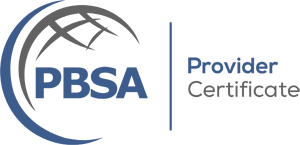Embracing Continuous Background Screening in Modern Workplaces

In today's fast-paced business environment, traditional approaches to background screening and communication are evolving. As organizations strive to maintain a safe and secure workplace while creating transparency and trust, the adoption of continuous background screening and proactive communication practices has become increasingly essential. In this blog post, we'll explore the benefits and best practices of implementing continuous background screening and communication into your organization's processes.
Understanding Continuous Background Screening
Unlike traditional background checks conducted during the pre-employment phase, continuous background screening involves ongoing monitoring of employees' criminal records, driving records, credit history, and other relevant data throughout their time with the company. This proactive approach allows organizations to identify potential risks and address them quickly, safeguarding the integrity of the workplace and protecting employees, customers, and stakeholders.
The Benefits of Continuous Background Screening
Enhanced Risk Management:
By continuously monitoring employee backgrounds, organizations can identify red flags or changes in circumstances that may increase risk to the company's reputation or safety. Early detection enables proactive intervention and mitigation of potential risks.
Maintaining Compliance:
Continuous background screening helps organizations stay compliant with industry regulations and legal requirements by ensuring that employees meet ongoing eligibility criteria throughout their employment.
Promoting a Safe and Secure Workplace:
Prioritizing safety and security is crucial in today's workplaces. Continuous background screening provides peace of mind by helping to identify and address potential security threats or risks to employees and assets.
The Role of Communication
Effective communication is a cornerstone of successful organizations. When it comes to continuous background screening, transparent and timely communication with employees is crucial. HR leaders should clearly communicate the purpose and process of continuous screening, emphasizing the organization's commitment to maintaining a safe and secure workplace while respecting employees' privacy rights.
Best Practices for Continuous Communication
Educate Employees:
Provide employees with information about continuous background screening, including its purpose, scope, and impact on their employment. Address any concerns or questions they may have and emphasize the organization's commitment to privacy and confidentiality.
Transparency and Consent:
Obtain consent from employees before implementing continuous background screening. Clearly outline the types of information that will be monitored and how it will be used, ensuring transparency and trust.
Regular Updates:
Keep employees informed about the results of continuous background screening and any actions taken as a result. Transparent communication creates trust and demonstrates the organization's commitment to accountability and safety.
Continuous background screening and communication are integral components of modern risk management and workplace safety strategies. By embracing continuous screening practices and fostering open communication with employees, organizations can proactively identify and address potential risks, promote a safe and secure workplace environment, and uphold the trust and confidence of employees and stakeholders.
At Western Verify, we understand the importance of continuous background screening and effective communication in today's workplaces. Contact us today to learn more about how our comprehensive screening solutions can help your organization mitigate risks and ensure a safe and compliant work environment.
Written by Morgan Mower, CRO and Co-Founder of Western Verify

Morgan is the Co-Founder and CRO of Western Verify, and spends his free time hanging with his family or making a Sunday dinner brisket.


